Shine On: Photos of Dazzling Mineral Specimens
The Snow Angel
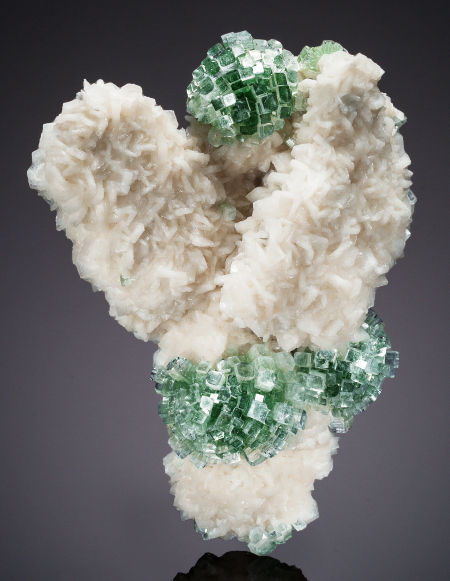
This mineral beauty, dubbed the "snow angel," was discovered during the digging of a well in India. The specimen is a silicate mineral called apophyllite-(KF), which appears in volcanic rocks. The snow angel is one of dozens of gorgeous minerals up for auction June 2, 2013.
Gold Sculpture
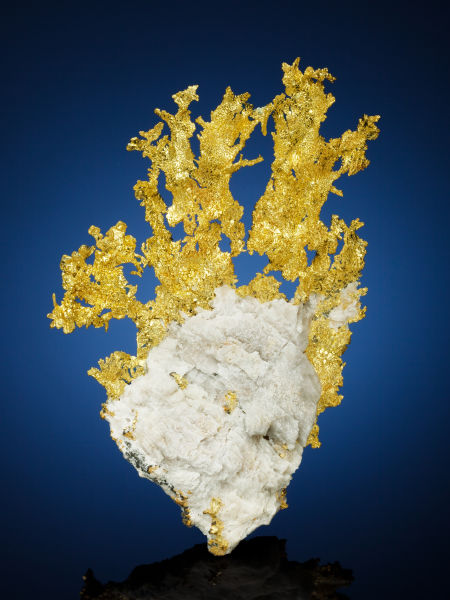
The opening bid on this natural gold "sculpture" is $15,000. This specimen comes from the Eagle's Nest Mine in Placer Co., Calif.
Linarite
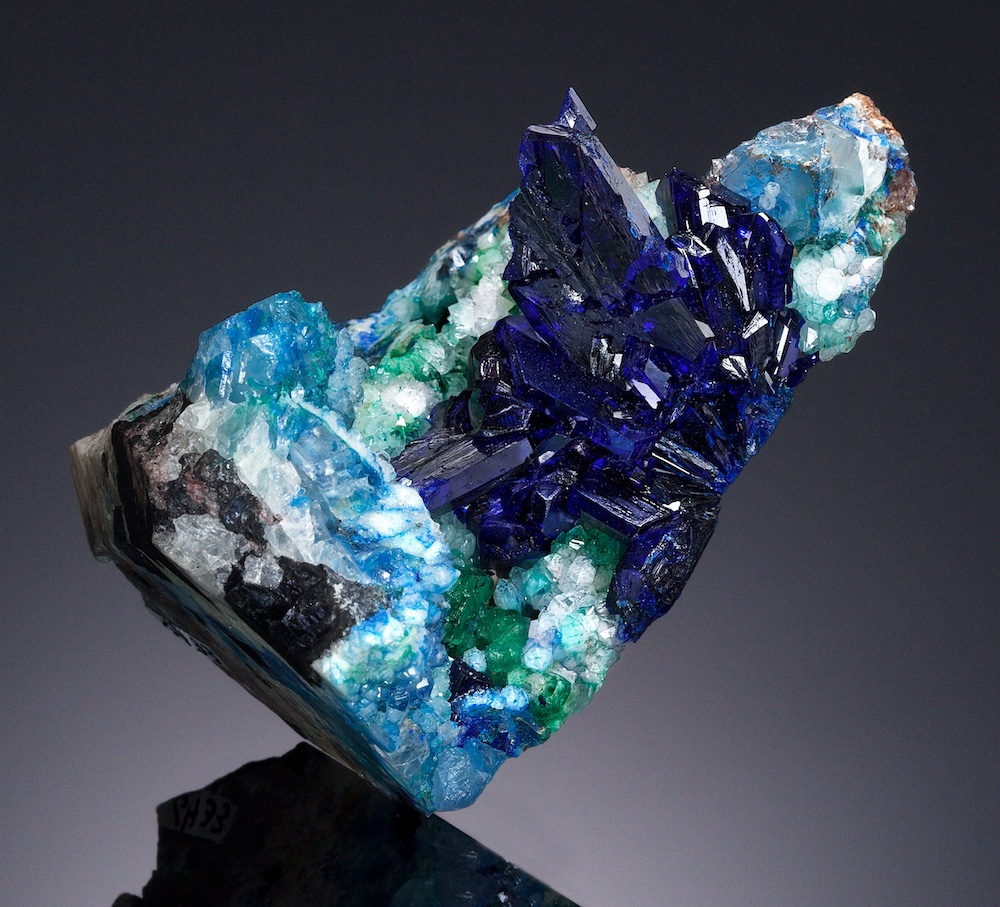
A specimen of a copper mineral called linarite contains unusual large crystals and could, conceivably, fetch more than $100,000 at auction, according to the auction house. All of the proceeds from the sale go to benefit Dallas's new Perot Museum of Nature and Science.
Tourmaline
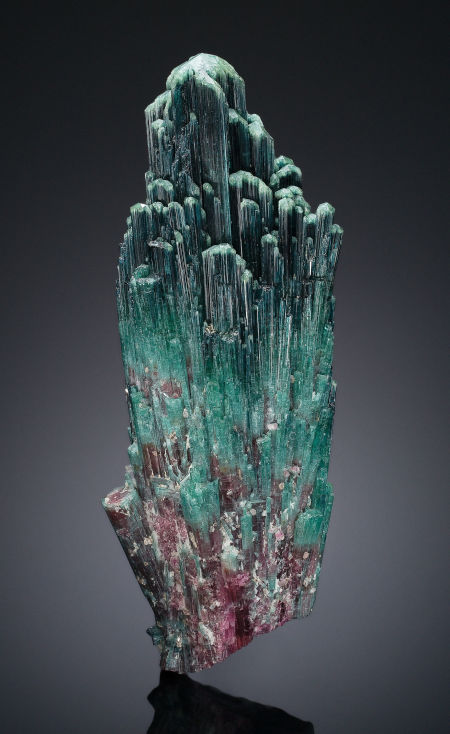
This 16-inch (40 cm) tourmaline goes up for auction June 2, 2013 with a starting bid of $30,000. Tourmalines are boron silicate minerals that get their rainbow-like colors from various elements such as iron, sodium or magnesium. This specimen comes from Brazil.
Cumengeite Crystal
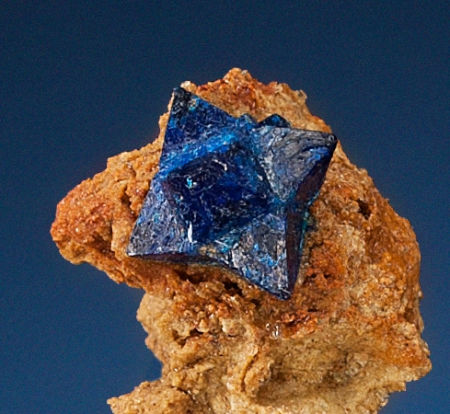
Tiny but super-rare, this cumengeite crystal perches on a throne of brecca, or broken-up rock and mineral naturally cemented together. Cumengeite is closely related to boleite, which forms cubes of a similar blue hue and is found in lead and copper deposits. This cumengeite measures just a centimeter across and comes from Mexico.
Stibnite Swords
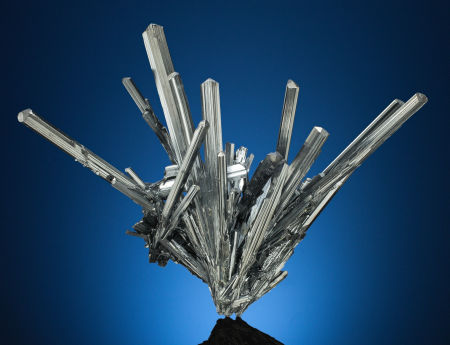
These stibnite "swords," made of the elements antimony and sulfur, were up for auction on June 2, 2013, with an opening bid of $32,500. This frozen firework of a mineral was found in the Lushi Mine in Henan, China and measures 9 by 10 by 4 inches (23 by 25 by 10 cm).
Rhodochrosite
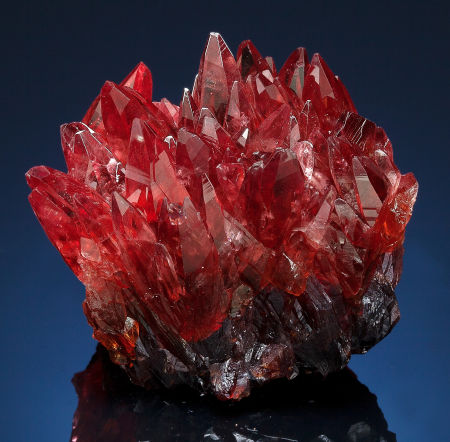
These stunning red rhodochrosite crystals are made of manganese carbonate. The largest of the crystals measure about an inch (2.5 cm) in length
Sign up for the Live Science daily newsletter now
Get the world’s most fascinating discoveries delivered straight to your inbox.
Opal Egg
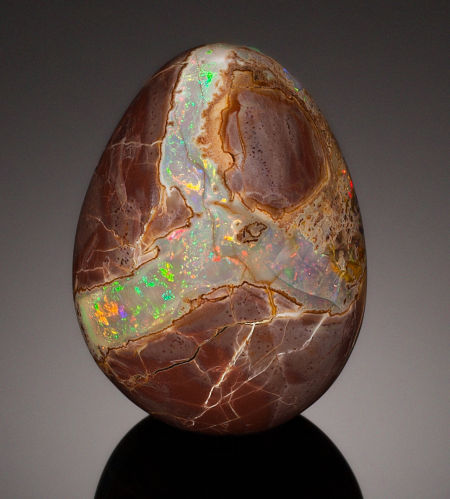
The smooth egg shape of this specimen isn't natural, but the rainbow-colored opal vein inside is. This specimen was mined in 1985 in Oregon. The brown areas are rhyolite, a volcanic, igneous rock. Opals are made from silica (the same stuff as sand or quartz), but are infused with water molecules. The arrangement of the silica diffracts light, causing opal's multicolored sheen.
Cubanite
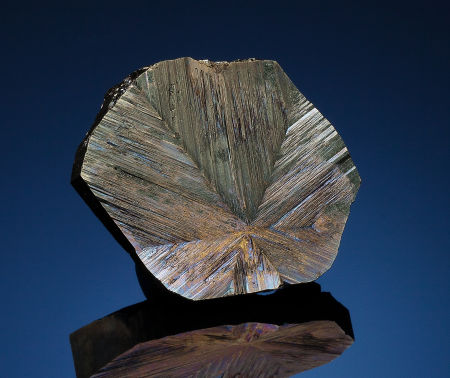
Copper, iron and sulfur combine to make cubanite. This specimen, up for auction June 2, 2013, may be the largest cubanite crystal on record at 1.5 inches (3.8 cm) across. This cubanite was discovered in a copper mine in Quebec, Canada.
Wulfenite
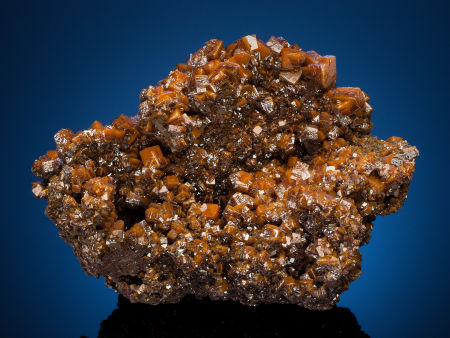
The buyer of this wulfenite crystal (starting bid: $10,000) will also get a complete history of the specimen since discovery. Found in Mexico and first bought for $40, the chunk of wulfenite was owned by some of the early luminaries of the mineral business, according to Heritage Auctions. These crystals are made from lead, molybdenum and oxygen.
Strontianite
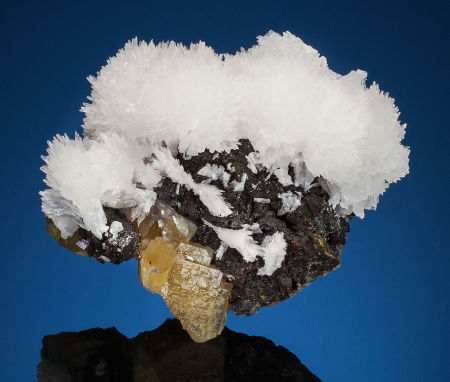
Delicate strontianite crystals top a Sphalerite (zinc ore) in this specimen from Hardin Co., Ill. Strontianite is made of the element strontium mixed with carbon and oxygen. Yellow and blue cubes of fluorite add a flourish to this otherwise black-and-white bit of geological art.











